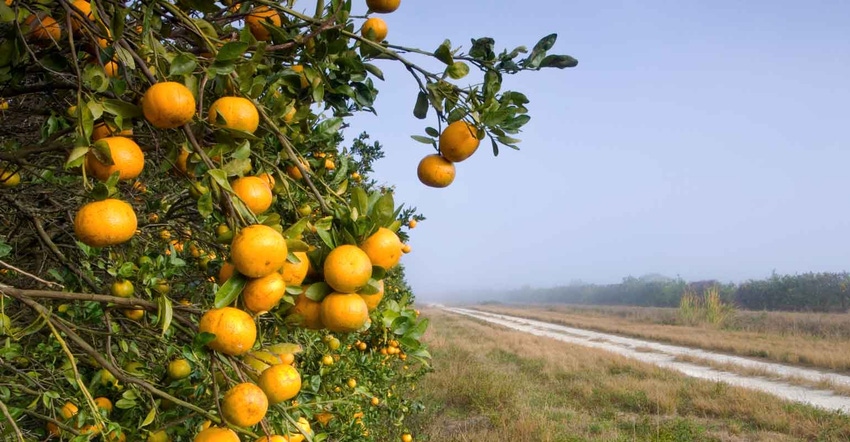October 5, 2022

Hurricane Ian’s impact on Florida’s citrus growers is still being assessed, but growers can take action now to protect their groves from further damage.
The University of Florida Institute of Food and Agricultural Sciences faculty at the Citrus Research and Education Center in Lake Alfred and the Southwest Florida Research and Education Center in Immokalee recommend quick attention to prevent further damage to vulnerable root systems and future fruit drop.
Flood waters resulting from heavy rains can severely impact roots already diminished because of HLB (Huanglongbing or citrus greening) disease. Phytophthora is a pathogen that attacks citrus tree roots, which are already weakened by HLB. Wet conditions, especially flooded groves, increase the possibility of phytophthora infection in groves with historical problems. If standing water has occurred in groves with phytophthora problems, growers should evaluate for root damage and treat accordingly.
Hurricane Ian caused fruit to drop from trees but also weakened fruit left on trees. Tripti Vashisth, associate professor of horticulture, recommends applying gibberellic acid in the next few weeks and prior to October 30 to support the tree’s ability to hold on to its fruit.
“Extensive leaf loss is going to stress already stressed trees. It is quite likely that extensive leaf loss with good soil moisture will induce new growth. GA application at this time can help with rehabilitating the trees and improve the leaf growth,” Vashisth explained.
Some growers are already using GA in a series of applications to improve fruit production and should continue to do so. Growers not using GA in this way are encouraged to make at least one application to encourage leaf growth lost to the hurricane, which will support future fruit production.
Tree defoliation also poses the risk of Asian citrus psyllids being attracted to any new flush that the trees will produce. It would be wise to watch for pest flareups associated with intense flushing later in October in those areas that were heavily defoliated by Ian.
Source: University of Florida Institute of Food and Agricultural Sciences, which is solely responsible for the information provided and is wholly owned by the source. Informa Business Media and all its subsidiaries are not responsible for any of the content contained in this information asset.
You May Also Like




